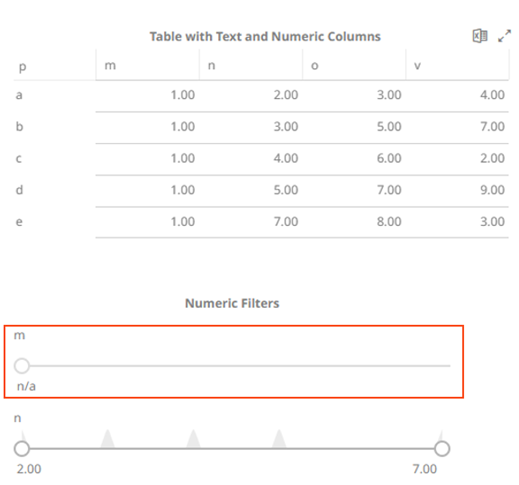Adding a Filter Box
Dashboards specific filters can be applied by adding and populating a filter box which is a container for numeric and categorical (text) filters.
You can add multiple filter boxes to a single dashboard.
Steps:
1. After double-clicking or drawing a rectangle
on the dashboard canvas, click  on
the Select Part pane then click the Filter Box
on
the Select Part pane then click the Filter Box
 icon.
icon.
The Filter Box Settings pane is displayed, and the Filter Box part is added on the dashboard canvas.
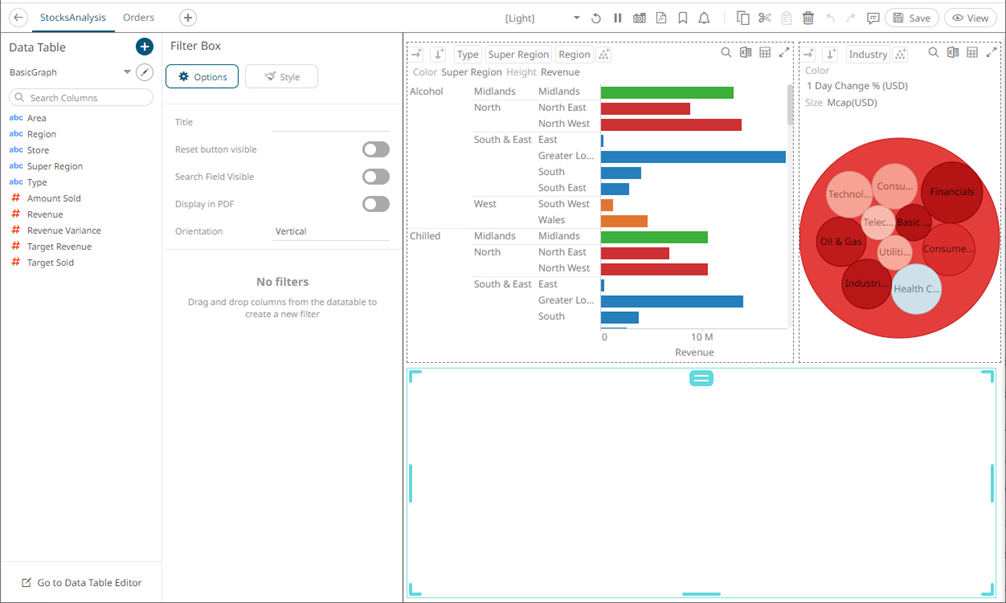
2. Enter the filter box Title then
click  .
.
3. Drag and drop columns (text, numeric, time, or time series) from the Data Table pane to this area:
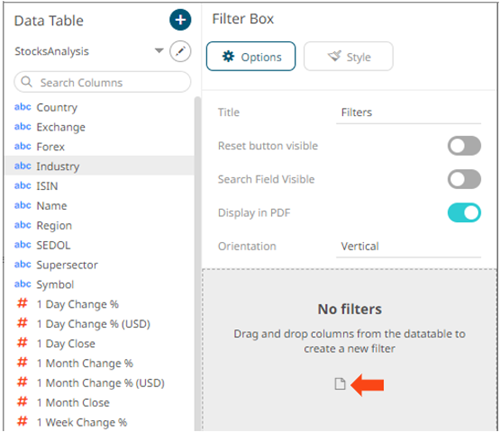
The columns are added under the Filter Box columns list and the filter box is populated by the default filter mode type of the added columns:
· Multiple Selection for text columns
· Numeric Range for numeric and timeseries columns
· Date/Time Range for time columns
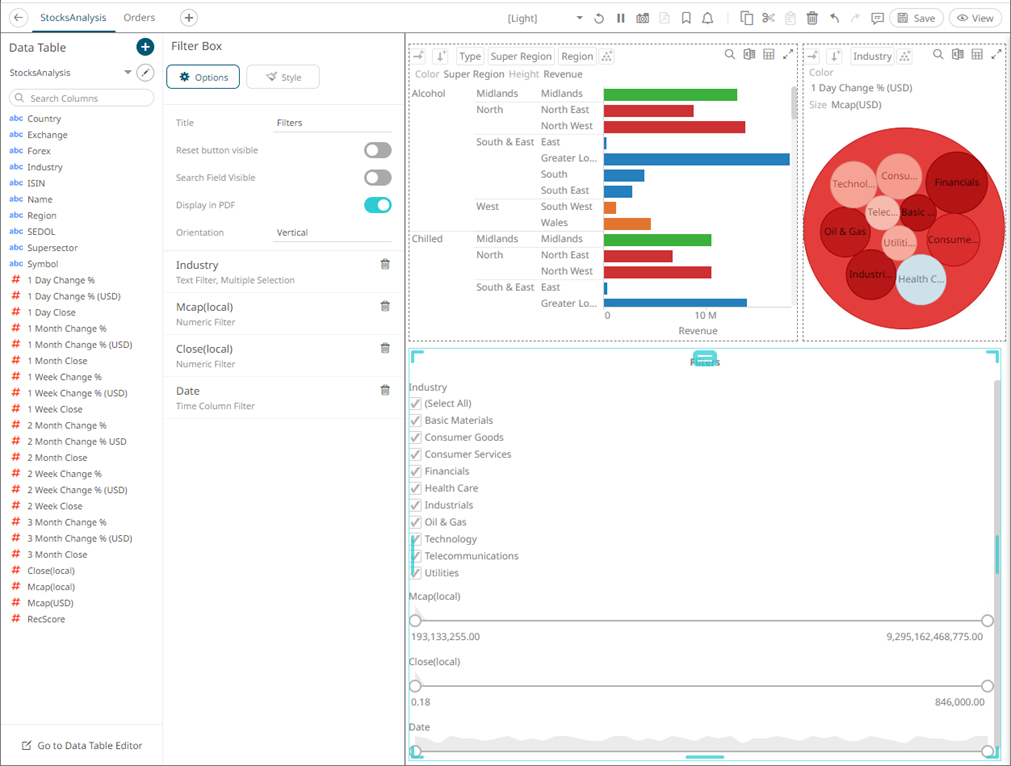
4. The Orientation of the filter box can either be:
· Vertical (Default)
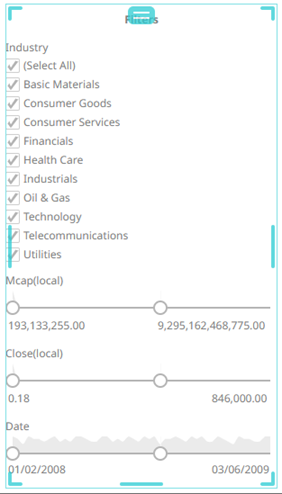
· Horizontal
The filter width can be configured in two ways:
¨ Dynamic
The filters will take the available space.
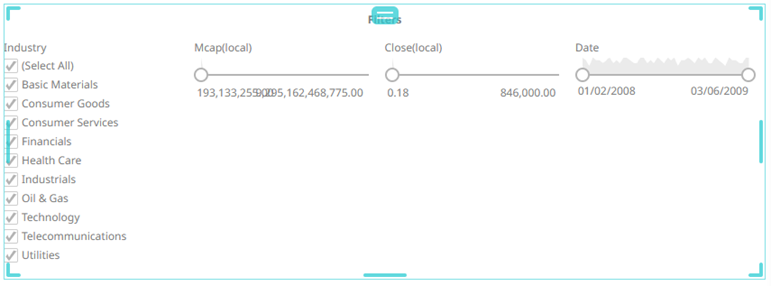
¨ Fixed
The input Width will be applied to available filters. Default is 200.
This is an example for width that is set to 180.
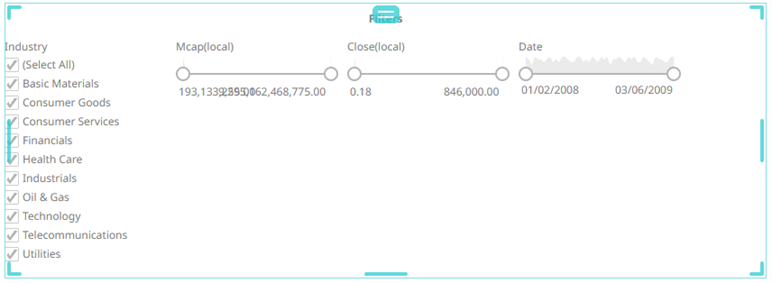
5. You can also configure the filter box to:
· Reset Button Visible
Tap the slider to turn it on and display a reset button at the bottom of the filter box.
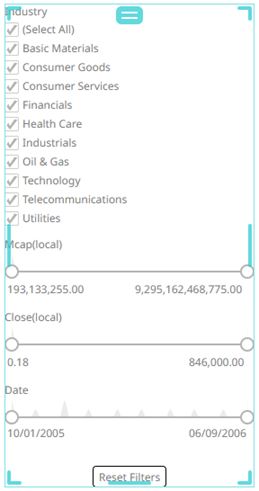
· Search Field Visible
Tap the slider to turn it on and display a search field, to limit the number of displayed filters at the bottom of the filter box.
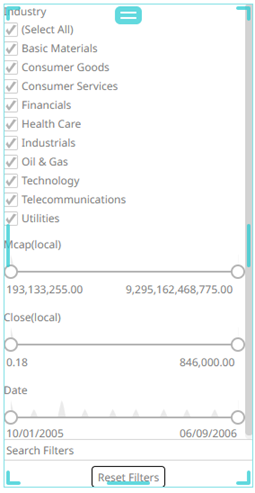
· Display in PDF
Tap the slider to turn it on and include the filter box in the PDF output.
5. To set the style of the Filter Box,
click Style  .
.
The page updates to display the Style pane.
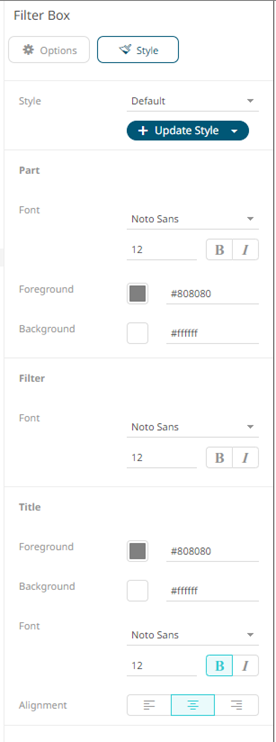
6. To modify the Foreground or Background color of the part and title:
· click the corresponding Color box to display the Color dialog to:
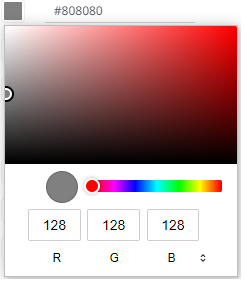
¨ select the color, or
¨ click to enter the values
for RGB

for HSL
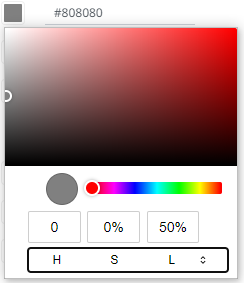
for the Hex color code

· or enter the Hex color code

7. Set the Font type, size, style (Bold and/or Italic).
The filter box title is set to Bold by default.
8. Set the filter box title’s Alignment: Left, Middle, or Right.
9. Click Update Style  and select any of the following
options:
and select any of the following
options:
· Set current as default – Save the changes and set it as the default.
· Create custom style – Save the changes and set it as a custom style.
The Style pane updates to display the Title control.

¨ Enter the custom style Title.
¨ If there are additional changes made, click Update Current Style in the Update Style drop-down.
The new custom style is added in the Workbook > Theme > Custom Styles list.

If published, the custom style configuration of the filter box will be added to the Global custom styles list and can be applied to other parts.
· Reset to default – Revert to the original default settings.
When
a filter is applied, ![]() filter icons appear to the
right of the filter column title and on the toolbar of the dashboard.
Clicking
filter icons appear to the
right of the filter column title and on the toolbar of the dashboard.
Clicking![]() will remove the filter.
will remove the filter.
Also,
Show Active Filters  icon
displays on the toolbar. This allows viewing of all the active filters
on the dashboard and its visualizations.
icon
displays on the toolbar. This allows viewing of all the active filters
on the dashboard and its visualizations.
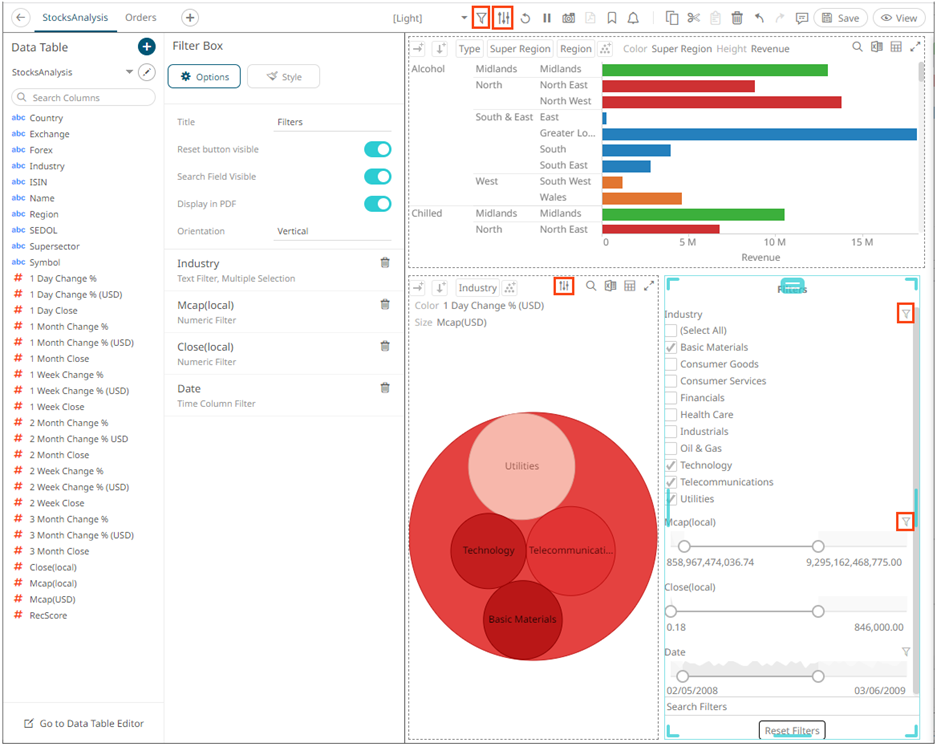
10. Click the Save  icon on the toolbar to save the
changes.
icon on the toolbar to save the
changes.
When
saved, the  notification
is displayed.
notification
is displayed.
|
NOTE |
Adding a numeric column with the same values on the filter box will be displayed but the slider is in a fixed position with the single value (NA) at the bottom. This filter is collapsible. For example:
|



